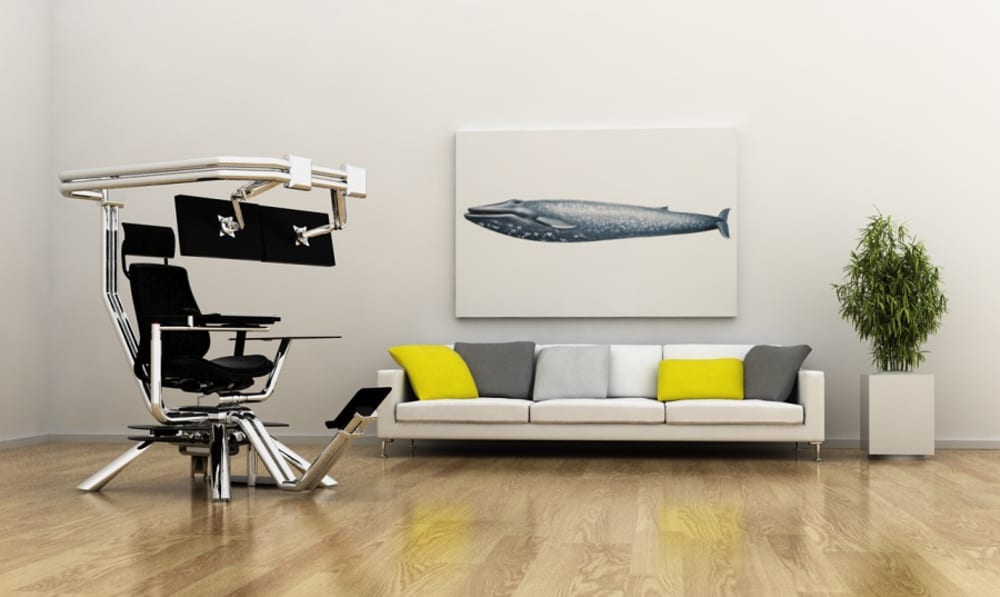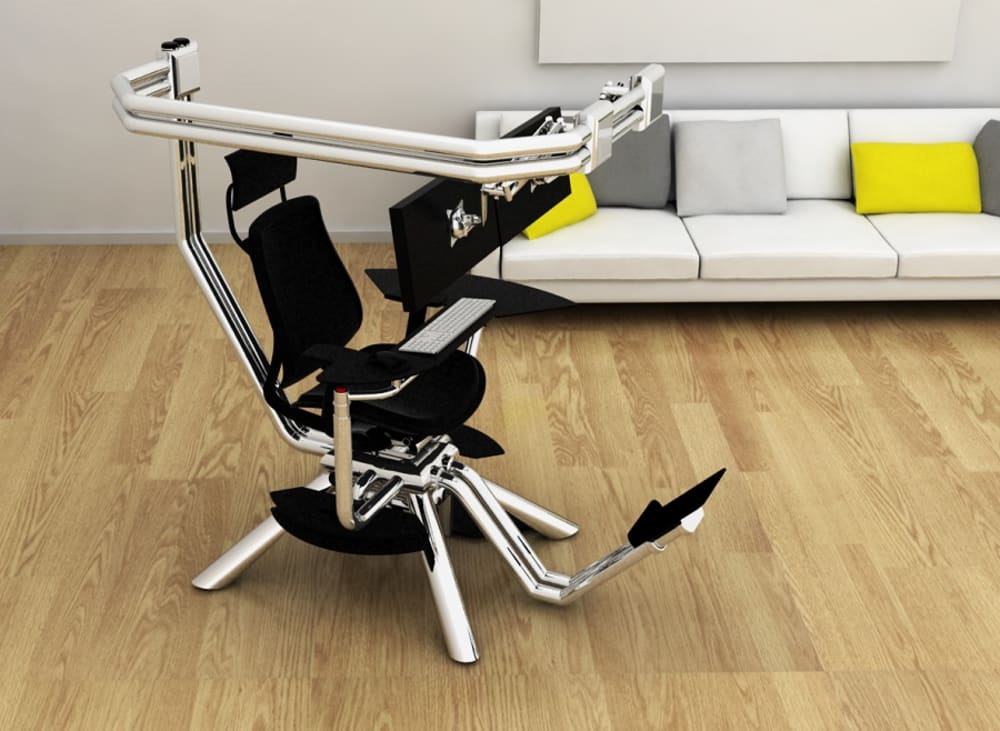According to the U.S. Department of Labor, Occupational Safety and Health Administration (OSHA), repetitive strain injuries, also called Work-Related Musculoskeletal Disorders (WMSDs), are the nation’s most common and costly occupational health problem. They represent 50% of all lost workdays and cost U.S. companies more than $61 billion per year in lost productivity.
According to the U.S. Bureau of Labor Statistics, nearly two-thirds of all occupational illnesses reported were caused by exposure to repeated trauma to the wrists, elbows and shoulders.
You may be familiar with the 'risk-factors' associated with injuries such as carpal tunnel syndrome, tendonitis or back strain. These injuries are due to small, repeated traumas to the musculoskeletal system and the nervous system when the job does not match the worker's capabilities.
INNOVATION / APPLICATION
The invention comprises a line of computer workstations with systems and system devices integrated therein. It relates to the biomechanics and ergonomic support of a user optimally using said systems and systems support devices.
The 'Chair-e Line' has been designed according to the International Organization for Standardization (ISO) multipart standard 9241 "Ergonomics of Human System Interaction."
The form factors optimize the Human-Computer Interaction experience while eliminating the 'risk factors' associated with Work-Related Musculoskeletal Disorders.
The 'Chair-e Line' combines a chair, a footrest, a desk surface and a computer together with peripheral devices both static and mobile. The complete line of workstations both supports and adjusts to the anthropomorphizing body sizes from the 5th — 95th percentile of the user population, providing unobtrusive stable support while responding to individual users’ needs, positions and interactions.
Optimizing Performance
When users are provided with alternatives that allow for systems’ sensory input and the systems output to be expressed in a mode for which specific applications may best be suited, the user's performance and productivity increases.
By integrating both the ‘physical' and 'virtual' environments together, users can now interact with systems using various input and output modalities including hand gestures, sign language analysis and synthesis, eye-tracking, object recognition, speech recognition and synthesis as well as both tactile and haptic interfaces.
RAD's Chair-e Line mediates interactions between digital information and the user, while turning interactions between humans and machines into a much more natural and intuitive experience.
MARKETING
RAD's Computer Workstations will be marketed globally through aggressive online marketing and trade event programs with partner technology companies. Target audiences will be decision makers and buyers in Education, and Business-to-Business industries that employ large populations of computer users.
RAD will create valuable online education and information content such as white papers, case studies and webinars that detail the enormous opportunity to reduce WMSDs and employer health costs, while increasing productivity through ergonomically designed computer workstations that optimize Human-Computer performance.
MANUFACTURING
RAD is ready to manufacture and go-to-market within six months. All structural components for the assembly of the Chair-e Line are made from a combination of 7075 and 6061 Aluminum and will be fabricated based on RAD's product Cad and SolidWorks files at RAD's production facility in China.
www.totallyradcomputers.com
Video
Like this entry?
-
About the Entrant
- Name:Richard Stieler
- Type of entry:teamTeam members:Richard Stieler
Benjamin Moglin - Software used for this entry:AutoCad, SolidWorks
- Patent status:patented





